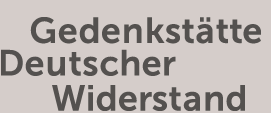German Resistance Memorial Center 8 Paths Leading to July 20, 1944
8 Paths Leading to July 20, 1944
Many high-ranking military men shared Hitler’s goals, of which he informed them in the Bendler Block in Berlin as early as February 3, 1933. They included the “eradication of Marxism root and branch,” the “strictest authoritarian government,” and the “conquest of new living space in the East and its ruthless Germanization.” Others were just as impressed as most Germans by his foreign policy achievements and plans for rearmament. Large sections of the military leadership even welcomed the elimination of the NSDAP’s “Assault Division” (SA), which they perceived as competition, during a murder campaign at the end of June 1934. For some officers, it was only the murder of the generals Kurt von Schleicher and Ferdinand von Bredow that opened their eyes. They became aware that they were serving an unjust regime.
The chief of Army General Staff Ludwig Beck initially tried to influence military decision-making processes by writing memoranda. When he realized his efforts brought no consequences, he called in vain upon the generals to stage a collective resignation.
In August 1938, Beck stepped down from office and became a key figure in the military opposition, working toward the removal of Hitler from power. He saw this path as the only possibility to avert war. In constant coordination with Carl Friedrich Goerdeler, the leading mind of the civilian resistance circles, he called for joint action by civilians and officers.
Henning von Tresckow played a decisive role among the younger opposition officers. He had a key involvement in several attempts on Hitler’s life. From the fall of 1943, Tresckow and Claus Schenk Graf von Stauffenberg systematically prepared the attempted coup, which aimed to remove the National Socialists from power.
Biographies
Documents
 Lecture notes by Ludwig Beck from July 16, 1938, with his thoughts on the behavior of the senior military leadership in the face of a threat of war with Czechoslovakia (transcription).
Lecture notes by Ludwig Beck from July 16, 1938, with his thoughts on the behavior of the senior military leadership in the face of a threat of war with Czechoslovakia (transcription).
Source: Bundesarchiv/Militärarchiv, N 28/4, fol. 36-40
English translation: Katy Derbyshire; English editing: Ginger A. Diekmann;
Editing: Ute Stiepani
1st edition 2016
 Draft for a “Law on the Restoration of Orderly Conditions in State and Legal Matters (Provisional State Constitution)” by Johannes Popitz and Ulrich von Hassell, 1940 (transcription).Source: Bundesarchiv, NL Popitz N. 94
Draft for a “Law on the Restoration of Orderly Conditions in State and Legal Matters (Provisional State Constitution)” by Johannes Popitz and Ulrich von Hassell, 1940 (transcription).Source: Bundesarchiv, NL Popitz N. 94
English translation: Katy Derbyshire; English editing: Ginger A. Diekmann;
Editing: Ute Stiepani
1st edition 2016



















